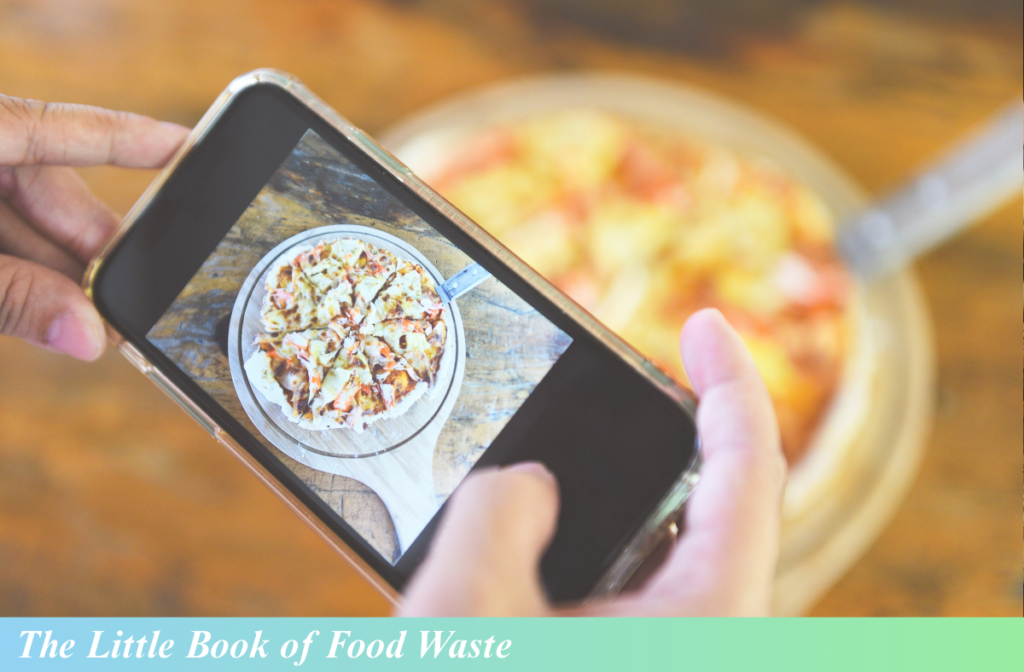One of the biggest takeaways from this site is that people waste food for different reasons. So, when it comes to making a food waste log, having a similar mindset will be helpful. If you’re not a particularly organized person, a detailed log may not be the right choice for you. If you’re incredibly organized, a food waste log that relies on creative tendencies isn’t going to work.
Here’s an overview of how each ‘eating type’ can make a food waste log that fits their needs.

How to Make a Food Waste Log: Getting Started
The first step in making a food waste log is to decide on the medium. You can use your phone, a notebook, a sketchpad, or the camera on your phone. You could also choose to download an app. Excel lovers can create a spreadsheet. It really depends on what you’re going to stick with.
Emotional Eaters
Emotional eaters tend to be led by their moods, so applying additional pressure with a detailed log may not be wise. Instead, go minimal. Take a picture of everything food-related that you throw away (for at least a week.) When the week is over, review the photos and note patterns in the waste. What times of day did you waste the most? The least? Were there any categories of food that were wasted the most?
Emotional eaters who get support from friends and family can also make it a group effort. Have your group chat and send pictures of what they’ve been wasting for one week. Discuss what you wasted and why.
Creative Eaters
Creative eaters can also benefit from the photo approach, but other options include sketching or doodling food waste. You can take photos, print them out, and make a collage to hang on the fridge. More graphically talented people could make an infographic of everything they wasted for a week. Something visual to have in front of you in the kitchen is the goal – a consistent reminder of what you ate and why you threw it away. If you don’t want to print it out, you can also publish it on social media to share. Creative people are often motivated by putting their “work” out there.
For those who are more motivated, a weekly diary that explains your feelings (why did you choose what you chose to eat, what time of day was it, what was your mood, etc.) can also help you reflect and become more aware of your feelings.
Adventurous Eaters
Our middle-of-the-road eaters are the most flexible of the group. Because they represent a wide spectrum of people, they should choose an approach that aligns with how they approach other tasks. If you lean more creative/emotional, try one of the recommendations above. If you lean more pragmatic/rigid, experiment with those ideas. It’s also fine to do trial and error, seeing which food waste log works the best for you.
Pragmatic Eaters
Pragmatic eaters are fuel-focused and practical, so they may be more open to using organizational tools such as Excel, food tracking apps, or hand-written logs to track waste. If you’re not one to feel emotionally connected or creatively inspired by food, try to track how many calories or vitamins you’re wasting. Research the food miles (how long it took for food to reach your plate) of your meal. Attaching logic and reason to waste may be the incentive you need to waste less.
Rigid Eaters
Rigid eaters know what they like and what they don’t, so they are likely to waste the least. However, that does not mean they are waste-free. For rigid eaters, tracking their portion sizes will be vital to decreasing food waste. Instead of tracking waste, try measuring the portions of your food for a few days. Then, calculate how much was thrown away. Even writing it down in a notebook, no frills needed, can help you fine-tune your go-to dishes to make sure that, for the most part, nothing goes to waste.
Getting to Know Your Eating Type
Not sure which type fits your eating patterns? Take our eating-type quiz!
